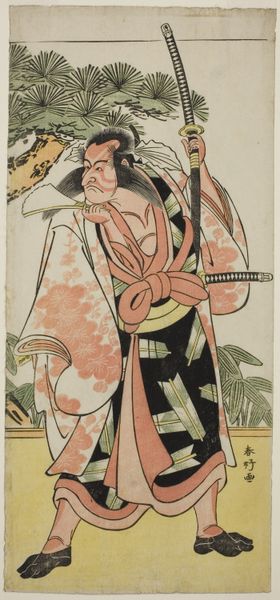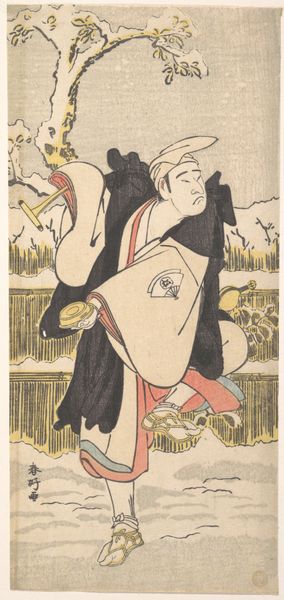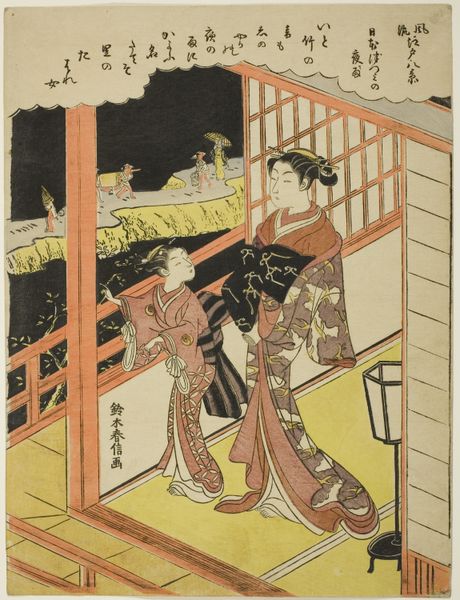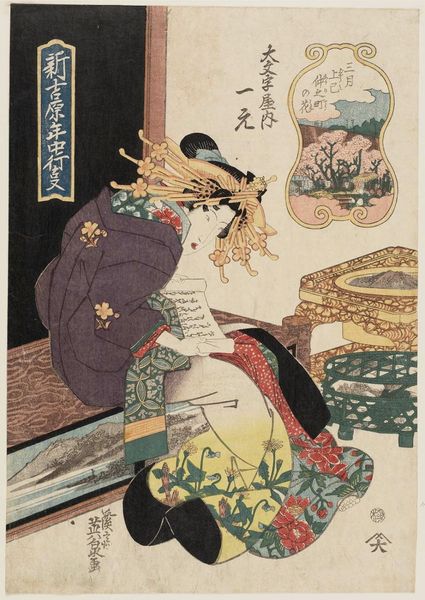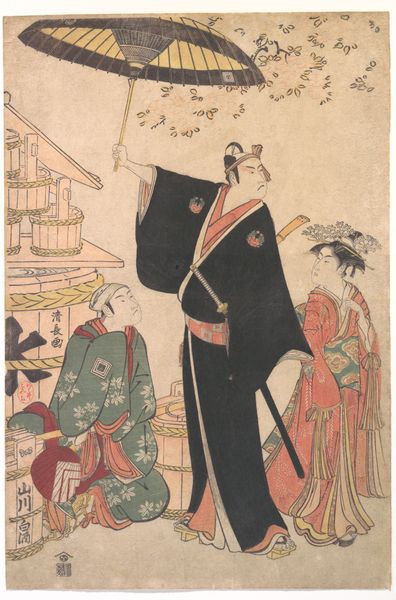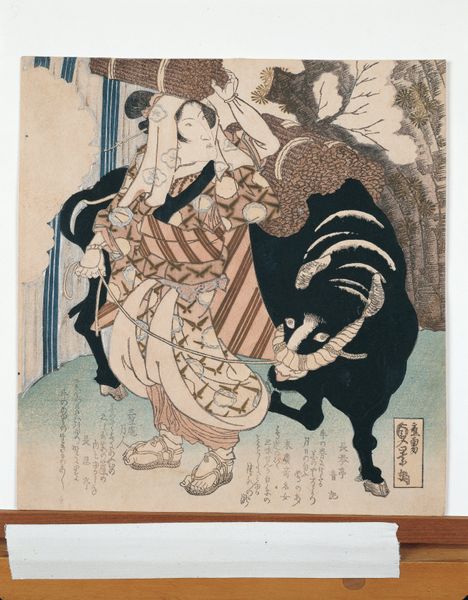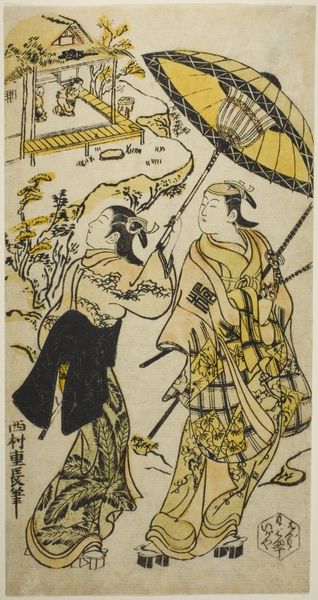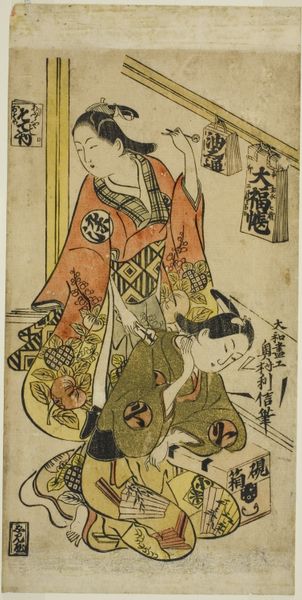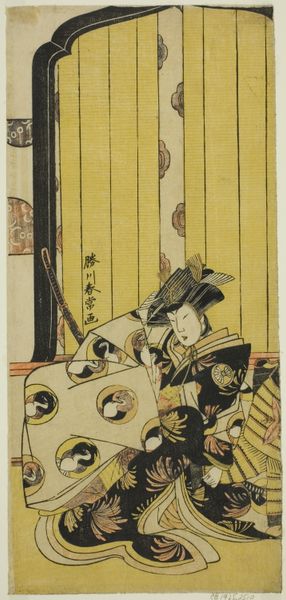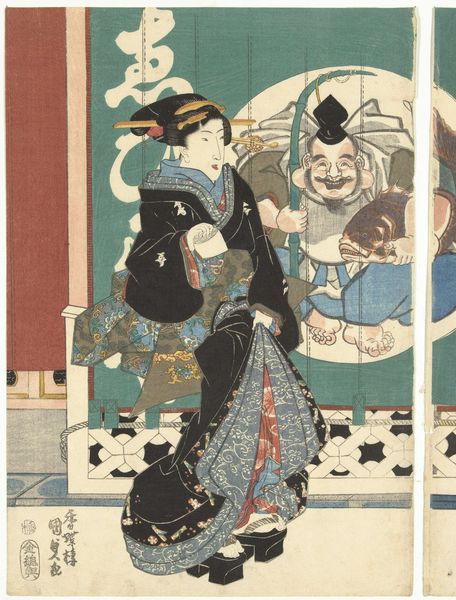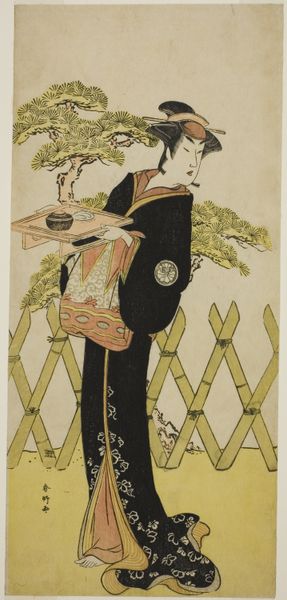
The Actors Ichikawa Monnosuke I as Kusunoki Masatsura and Arashi Wakano as Oyuki in the play "Honen Taiheiki," performed at the Nakamura Theater in the eleventh month, 1723 1723
0:00
0:00
print, woodblock-print
#
portrait
#
ink drawing
# print
#
asian-art
#
ukiyo-e
#
japan
#
woodblock-print
#
line
Dimensions: 33.5 × 16.2 cm
Copyright: Public Domain
Curator: This is Okumura Toshinobu’s woodblock print, made in 1723. It depicts actors Ichikawa Monnosuke I and Arashi Wakano in the play “Honen Taiheiki”. The work resides here at The Art Institute of Chicago. Editor: My first impression is one of theatrical artifice. The figures and the light seem incredibly flat. Is this characteristic of this kind of printmaking? Curator: Yes, absolutely. This piece is Ukiyo-e, meaning "pictures of the floating world," reflecting Edo period tastes. Consider it within its historical moment: the growth of urban centers, the rise of merchant classes, and their influence on cultural institutions. Editor: Right. The costumes look magnificent; all the yellow ink! Was yellow particularly difficult or expensive to acquire? Curator: A good question! The application of vibrant pigments like yellow, created using dyes derived from plants, would require a high level of technical skill from the woodblock carvers and printers to achieve uniformity and depth, which added cost. It certainly signals something about the status of theater and print production in society at the time. Editor: The Kabuki theater played such a prominent role in disseminating cultural values, didn't it? So this is both documenting a moment in time and also creating cultural cache. Curator: Precisely. By immortalizing the actors, their roles, and the stage itself, the print acts as both a record of a specific theatrical event and as promotion of social norms—linking the performances to ideals of morality and loyalty for wide consumption. Editor: It’s interesting how this bridges art forms; printmaking advertising theater. Makes you wonder about distribution. Curator: Indeed. Considering the mechanics of its production and circulation alongside its imagery highlights its significance within broader commercial and artistic networks. It prompts us to reconsider who art was *for* in that period, moving beyond simply admiring its beauty to understanding its social role. Editor: It has definitely shifted my thinking. Thank you. Curator: My pleasure, that's the hope!
Comments
No comments
Be the first to comment and join the conversation on the ultimate creative platform.
